The past four years have seen an unprecedented spate of self-immolations by Tibetans across various regions of China in protest against the Chinese occupation of Tibet and the heavy security presence in areas with large Tibetan populations. According to Free Tibet, a London-based organisation, on 3 February 2013, 37 year old Lobsang Namgyal, who had been a monk at the Kirti Monastery in Sichuan province, became the 100th person to self-immolate since February 2009. At least 82 people have died as a result of their self-immolation. Panos photographer Adam Dean was one of the only journalists to evade a heavy security presence in Gansu province to reach the families of some of the recent people who have died.
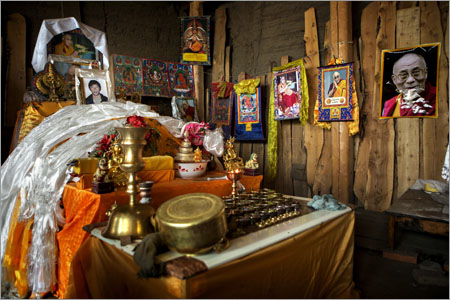
A shrine for Gongbu Tserang, 23, who self-immolated himself on 13th November 2012, is adorned with photos of the Dalai Lama. Ahlaxiang, Gansu Province, China. © Adam Dean / Panos Pictures
With the recent spike in the number of cases which some believe to be connected with the 10-yearly meeting of the Chinese Communist Party and the change of its leadership, the government has decided to issue a warning to anyone ‘encouraging’ people to protest in this way that they will be charged with murder.
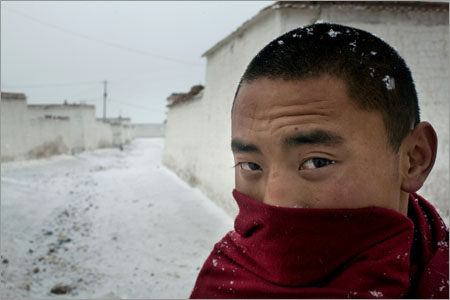
A monk stands in the snow at Amchok Monastery where three Tibetans, including Tsering Dondhup, 35, recently self-immolated. Amchok Village, Gansu Province, China. © Adam Dean / Panos Pictures
So far the protests have achieved little on the international stage and the government has responded instead with a security lockdown of the regions most affected, with all forms of communication cut off. Outside visitors have also been barred from visiting the region.
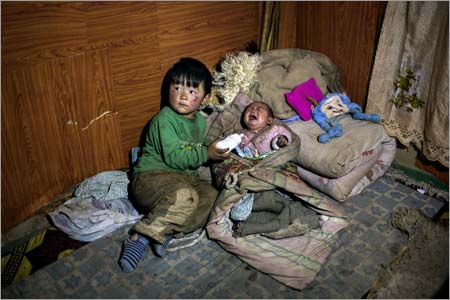
The children of a Tibetan herder in his 30s who recently self-immolated, leaving a wife and two small children. Sangke Village, Gansu Province, China. © Adam Dean / Panos Pictures
With no sense of irony, state-run Xinhua news agency has also reported that Buddhist monks have been recruited for fire-fighting duties. “In addition to their usual routine of studying scriptures and meditating, the monks engage in firefighting training sessions once a week. Large rooms outside temple prayer halls are used as fire-control offices. It’s exciting for the monks…”
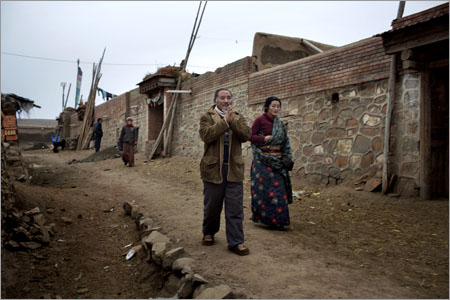
The father (left) of Tsering Dondhup, 35, who self-immolated on 26th November 2012 in protest at a nearby Han Chinese mine, prays as he walks near his family home with other family members. Amchok Village, Gansu Province, China. © Adam Dean / Panos Pictures
Adam Dean travelled to Gansu province where many self-immolation have taken place and visited the bereaved families.
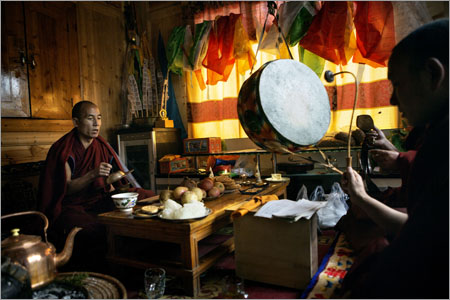
Monks pray during a ceremony for Gongbu Tserang, 23, who self-immolated himself on 13th November 2012. Ahlaxiang, Gansu Province, China. © Adam Dean / Panos Pictures
